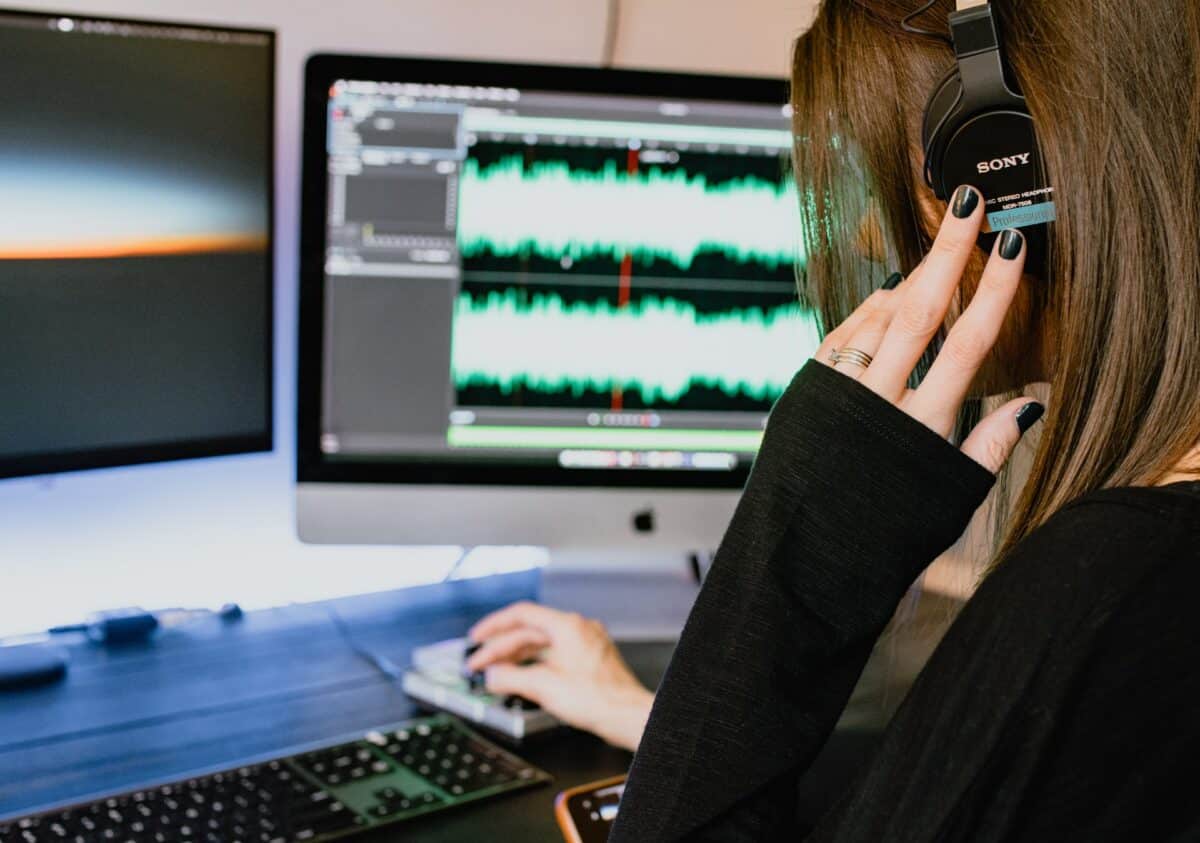When music and video work together perfectly, it feels magical. Pick the right music, and your video suddenly feels more coherent. It packs a bigger emotional punch. These results mean music selection is worth putting some effort into. Unfortunately, there’s no foolproof way to find the perfect music for marketing videos. You have to rely on music libraries and your own knowledge. Even after you’ve picked a song, music copyright rules can make the process more complicated than you might think.
Fortunately, patience, determination, and a little help from experts can simplify the process. Here are our top tips for how to find music for marketing videos, while respecting artists and copyright laws.
Make Your Soundtrack Search a Priority
Music selection often comes at the end of the project. You might be running low on time and budget by that point. So it can be tempting to skimp on music. Don’t do this. What seems like a frugal choice can keep your video from being as effective as possible.
Plan ahead so you have time and budget to choose music for marketing videos. Plan to choose the music early in your project. For animation projects, you can start thinking about music as soon as you have a storyboard and character designs. By that point, the mood and tone of your video should be clear, and you can focus on music choices that match these elements. It can work the other way too. Sometimes choosing music early can inform your creative decisions.
When it comes to budget, set aside at least 10-15% for music. You might need a little more if you plan to compose and record original music or license a popular song. If you’re choosing from a royalty-free library, you might get away with a little less. We’ll take a closer look at some of these options below.
Pros and Cons of Different Music Sources
You have two broad options for how to legally and ethically get music for your video. You can:
- Compose and record an original soundtrack
- License existing music
Composing and recording might be more affordable than you think. Some home-studio composers provide good results starting at about $1,000. Of course, finding the right composer can be a challenge, but the results can really elevate your video. Just remember that perfecting a composition can take time. Make sure you build that into your project timeline.
Licensing original music might seem more budget-friendly, and it can be. However, if you want to license a popular song, the costs add up quickly. The process can also be time-consuming, so don’t forget to build that into your timeline. Royalty-free music libraries are much quicker to work with and can offer a wide range of options.

Tips for Recording An Original Soundtrack
Gone are the days when solo composers working with desktop tools could only create music that sounded sterile and electronic. Today, the quality of instrument samples and the tools to tweak them have improved dramatically. A composer working in their studio can create respectable orchestral effects. Of course, samples will never match the work of talented session musicians, but often all it takes is a single real instrument – recorded live – to lift a recording and give it warmth and professionalism.
But why bother recording original music at all? Imagine that you spend the first third of your marketing video talking about a pain point. Then the customer finds the product that solves their problem. Things start looking up! You can’t take the viewer on that turn unless the mood of the music changes in the right way and at the right time. A composer can hit cues so the music participates in the storytelling.
For example, in this video for The Spice Hunter, notice how the custom soundtrack evokes the sounds and musical styles of different regions of the world.
On the other hand, if you’re not using the music as a storytelling device, you might not need a custom soundtrack. In that case, you’ll probably get more affordable results with something pre-recorded that fits the mood of your video.
Licensing Music for Marketing Videos
Music licensing for video can get complex. Obviously, you need permission from the copyright holders to use any kind of music in your video. But a single song can have multiple copyright holders, including composers, performers, lyricists, and publishers. While it is possible to get permission to use well-known songs, it will be expensive and the process is complicated. A music clearance service can help, but plan to wait months for a result.
As an easier and less expensive option, you can visit an online royalty-free music library. These often have search tools that let you look for music based on style, tempo, orchestration, or mood. Here are some of the services we have used, along with some comments from our music guru Jared Paul:
- NeoSounds: Three tiers, prices vary. They have useful search tools.
- Tunefruit: They use a 5-tiered licensing method depending on how you plan to use the work, from student projects to custom quotes for national advertising. The corporate tier is $46.
- Premium Beat: They have a two-tier structure, $49 for web-based or non-commercial, to $199 for non-web commercials. Jared says, “Premium Beat offers great value, with quality tracks at price points friendly to indie producers and small businesses.”
With the services above, you can usually find music for commercial purposes for less than $200. The following services can sometimes be a bit more expensive, but usually still in the hundreds.
- Music Bed: Licenses are based on usage and the size of your company. Jared says, “Music Bed tends to have tracks from up-and-coming artists and bands, who would be writing the songs anyway for themselves and their fans, rather than specifically for production use, so sometimes their tracks sound a bit more authentic.”
- Music for Productions: This is a more professionally oriented service, based in Montreal. All quotes are customized, and it is less of a self-serve experience.
- VideoHelper: Attractively designed site with six licensing tiers based on usage. Jared says, “their tracks are carefully crafted to have multiple good breaks and built-in edit points, which gives a lot of good options for editing.”
Most of these services allow you to download a sample to try out on your cut. They may put an audio watermark on the file or provide a lo-fi version of the track in order to discourage non-payment. Once you are happy with your music, you can pay for the license and obtain a high-quality, watermark-less file.
What to Consider When Choosing Music for Marketing Videos
So far we’ve talked about where to find music. But how do you know which track to choose? Each of these platforms has thousands of songs. It’s easy to get overwhelmed. These four factors can help narrow down your choices.
1. Budget – the most straightforward factor influencing your music choices. Knowing your budget before you start looking will limit your choices to what you can afford.
2. Tone and Mood – You want a piece of music that matches the mood of your video and the story you’re telling. Keep your video branding guidelines in mind too, so you can choose music that fits both this video and your overall brand style.
3. Audience – Ideally, an understanding of your audience informs all of your video marketing decisions. Music is no exception. Think about the style of music your audience is most likely to enjoy and identify with.
4. Pacing – Look for music that matches the pace and speed of your video. The number of beats per minute matters here.
How To Edit Your Soundtrack
If you choose library music, you might need to edit it to fit your video cut. Follow a few simple guidelines to unite video and music into a seamless experience for your viewers.
- Figure out the structure of the music. Try to preserve that structure as much as you can. For example, don’t want to put two choruses back to back.
- Try to keep the beat when you make a cut.
- Try not to change the key abruptly.
- Experiment with straight cuts (changing the music with the scene) and very short cross-fades (fading two tracks in and out over 2 to 4 frames) to see what sounds best.
Follow these rules, and your cuts are more likely to sound natural. If the idea of editing your own soundtrack gives you stage fright, look for an audio editor who can help.
It’s Worth the Effort to Find the Right Music For Marketing Videos
Whether you have commissioned an original piece or licensed an existing track, music has the power to complete a video experience. Don’t settle: the sweat and resources you put into music will be paid back to you many times over.
For help uniting music and video into a seamless marketing video, contact the experts at IdeaRocket.





